Process services
This section provides details on service flow implementation chains of process activities. To understand the processes themselves that this section builds upon, please see the Process flow control section.
Process message exchange
Processes communicate asynchronously via message events whereby one process will send an outbound message and the other receives it. In the figure below we see an example of this pattern whereby the sending process (Signal Adjuster Report Created) on the left side and the receiving process (Initiate Claims Processing) on the right side reference the same message Under Cover Agent (UCA).

In the sending process, the outbound message event has Data Mapping setup with a mapping to the correlating data plus the event payload. The correlating data is important because there is a need to identify the specific Initiate Claims Processing process instance that is awaiting the response from Signale Adjuster Report Created.
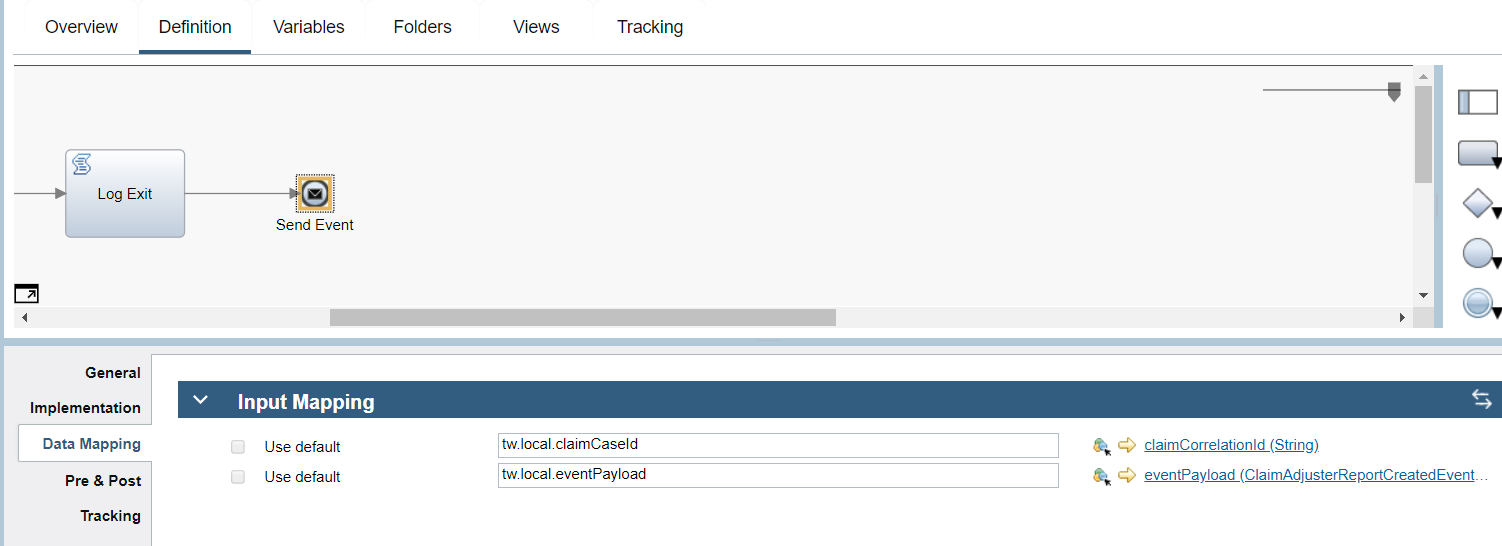
Here on the other side of the exchange you can see that the event data's claimCorrelationId is designated as the correlation variable and is used then to compare to the claimCaseId values of instances in order to match and resume processing in the correct instance.

Case properties synchronization
In order for Case properties to be referenced inside processes they need to be retrieved. Inside the process, an AutoClaim Business Object is modeled which represents those data items of interest to the process, a large majority of which are also Case properties.

A framework of services has been developed to allow for obtaining Case properties and setting them on the various levels within the complex Business Object (BO) structure (and updating them as we will cover later in this section). The principle is that each BO within a higher level complex structure has a mapping service such as illustrated in the below Map Vehicle Input (which is inside the Denim Compute Auto Claim Toolkit) for a vehicle object. That service in turn calls a generic service Map BO Input to perform the mapping.

The data mapping on the service accepts as input an ANY type representing the BO to populate and then returns it populated with data from the corresponding Case properties. The other key input is a String list representing the set of property to attribute mappings.

In the Set Vehicle Mappingsscript, the CSV list is created. This list has an entry for each target attribute in the BO and passes in for each entry a formatted string, an example of which is highlighted. To take that value DENI1_VehicleMake:make:String the first part represents the unique name of the case property, the second is the BO attribute name, and the third is the data type.
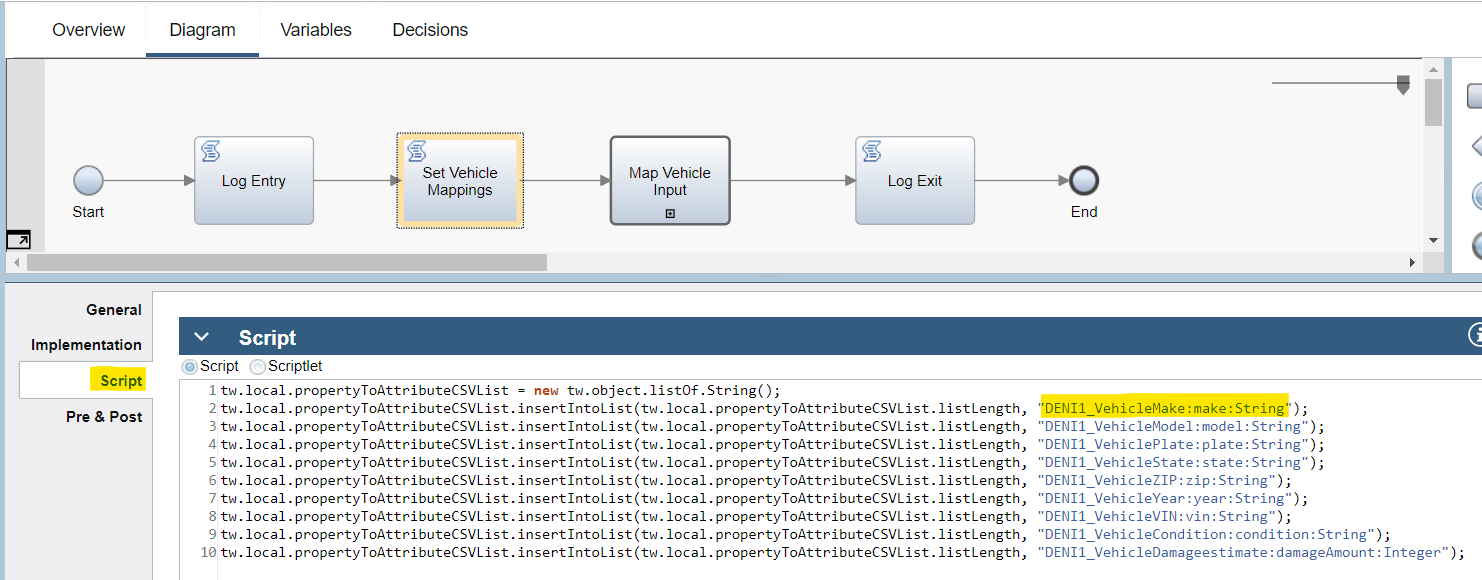
Here is the corresponding case property named Vehicle Make showing where the unique identifier comes from inside Case Builder.

The Map BO Input service is shown here, it makes calls to a number of helper services in order to interact with Case using the JavaScript API.

Returning to the mapping, the higher level AutoClaim BO is mapped similarly in a service Map AutoClaim Input and also it delegates to lower level services (such as Map Vehicle Input shown earlier) to perform the mappings of the contained BOs within it.
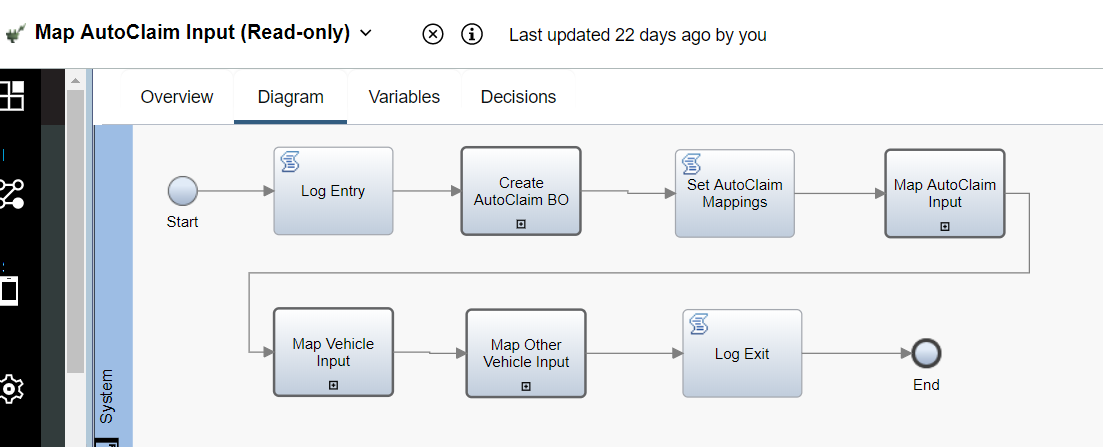
When data is required to be updated in Case the pattern is to set the inputs on and invoke a generic service Write Case Properties as illustrated in the service Update Claim Settlement Details (found in the Denim Compute Auto Claims Toolkit) shown here.

The Map Properties script sets the casePropertyUpdateList variable used as the input mapping on the target Write Case Properties service.

ODM integration
BAW integration to ODM is by using a REST External Service. The service includes the three ODM operations used in the scenario, it is named Denim ODM Service and found in the Denim Compute Decision Services Toolkit Toolkit shown here:

An example usage of the External Service is in Perform Claim Segmentation within Denim Compute Auto Claim Toolkit Toolkit. Note in the scenario that there is a boundary error event handler in case the ODM service is unavailable and this then sets the outputs to follow a default path. The inputs to the ODM operation are set from case properties using the pattern already described in the Case properties synchronization sub-section above.

ECM integration
BAW uses two main patterns to integrate to ECM, first it has to read existing documents from ECM in order to display them to the user inside client-side human service coaches and second it has to write a new JSON document to ECM with the complex data structures populated within BPM. For the first pattern a service flow named Get Claim ECM Documents in Denim Compute Auto Claims Toolkit Toolkit is called from the Loss Assessment process as shown here.
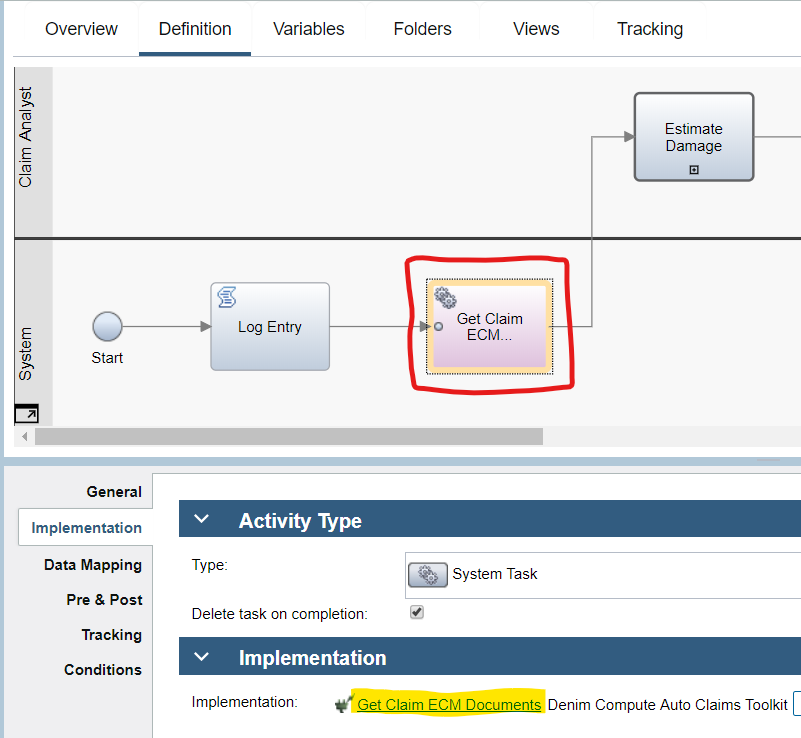
In the Data Mapping inputs to that service we provide the claimCaseId and claimSubfolderPath which are used to find the Case ECM folder and the sub folder within it of interest (in this situation that is Damages Evidence).

Here is the Get Claim ECM Documents service flow where it uses the Content Integration feature to makes calls to Get Folder by Path and Get Documents in Folder.
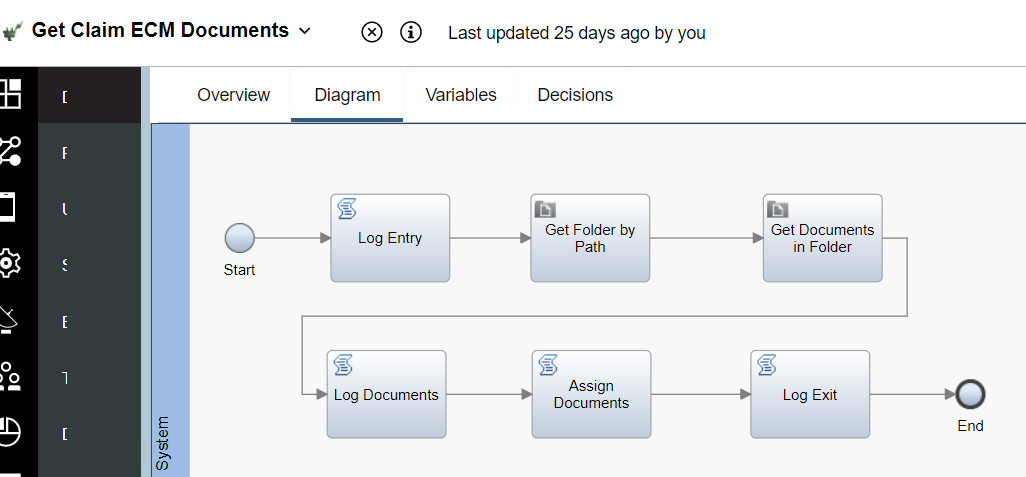
It then filters the returned documents to ensure that they match the Document Class of interest and that they have metadata for the Vehicle Plate that matches the vehicle that is bound to this particular service flow.
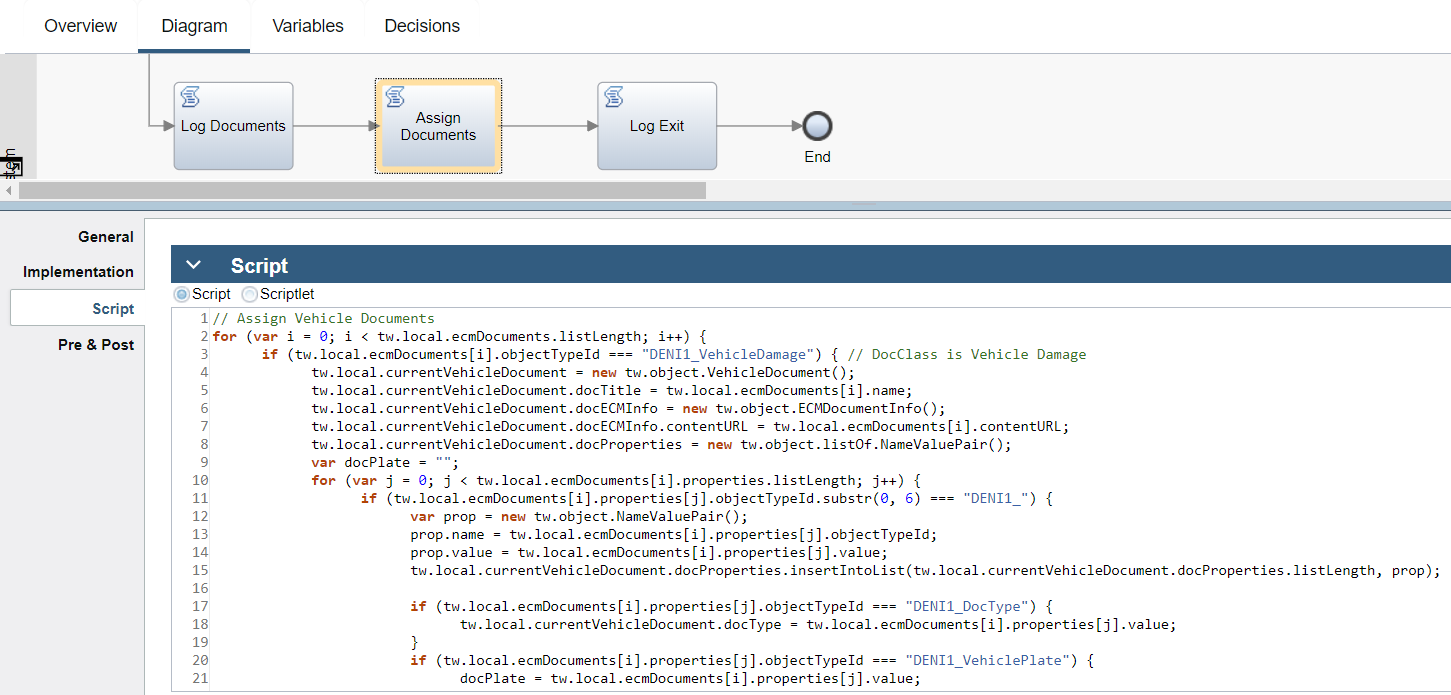
The Loss Assessment process we saw earlier then invokes the Tender for Estimates Client Side Human Service. In the Coach layout a reusable View named Vehicle Documents (found in Denim Compute Auto Claims - Common Toolkit) is used and has the documents that were retrieved bound to it.
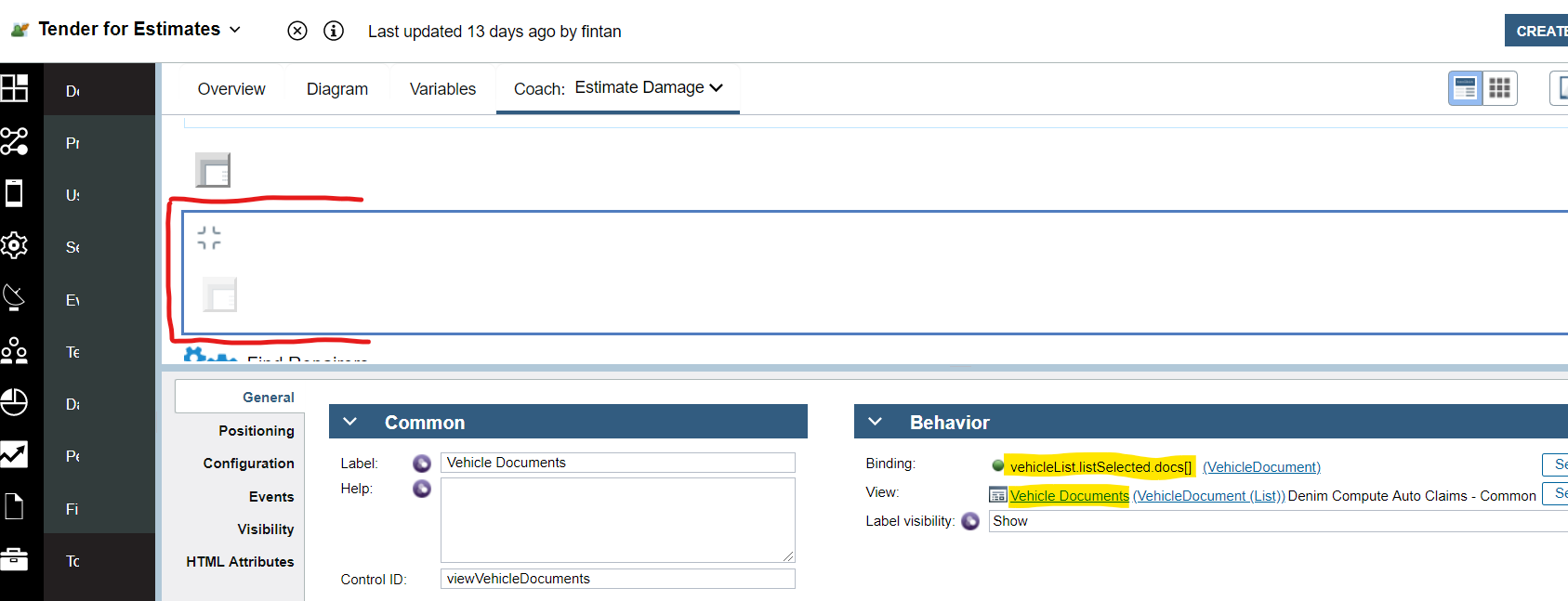
In Vehicle Documents a Viewer control from the Content Management Toolkit is used to display the document content as shown here.

Moving now to the second pattern, in the Initiate Claims Processing process one of the last activities is to store the JSON representation of the complex BO structure in the Case folder by invoking the service flow Write AutoClaim JSON Output.

In Write AutoClaim JSON Output (within Denim Compute Auto Claims Toolkit) the steps include a call to a Content Integration step using the Create document operation.

A previous step Convert to JSON is used to parse the AutoClaim BO and convert it into native JS equivalents and from that to extract the JSON formatted output.

BACA integration
As seen in the mediated BACA integration section of the workflow design, the Case Activity implementation (Process Repair Estimate) on receipt of an estimate PDF processes the document via BACA and then sends an event notification where it sets correlation data and the VehicleRepair BO.
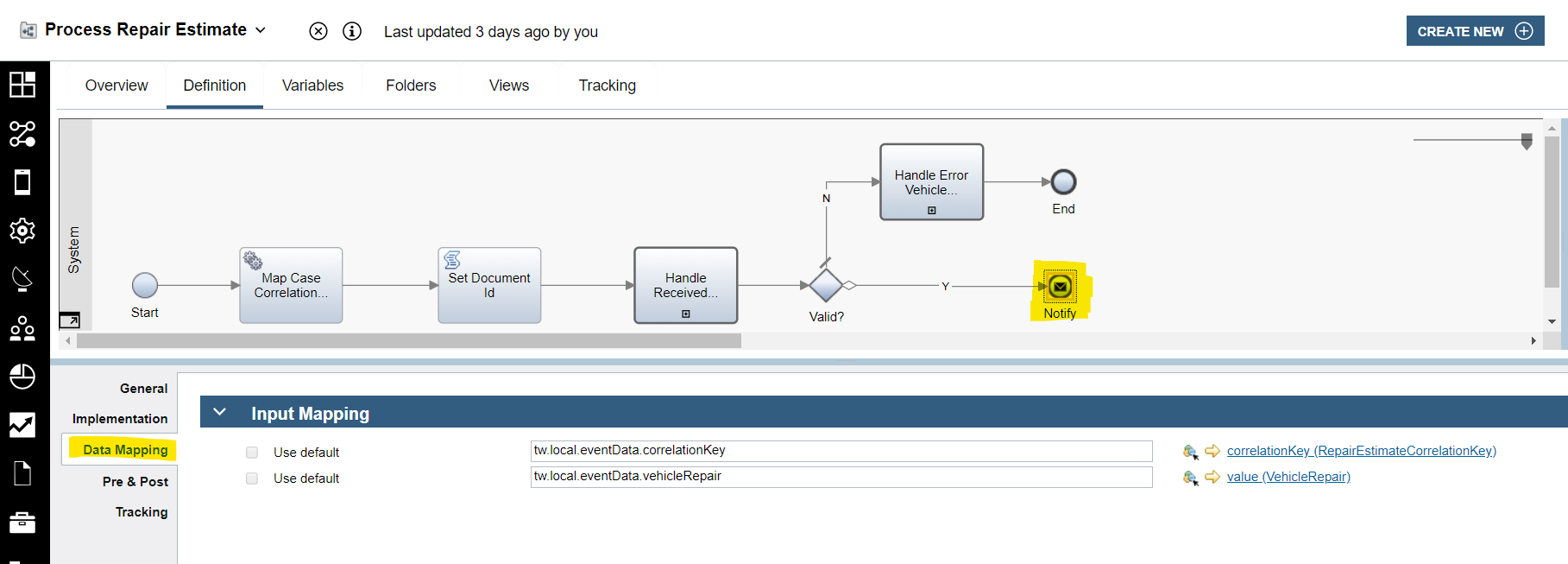
The event message correlates to the corresponding running instance of Provide Repair Estimates Per Repairer by matching on the correlation key data (the combination of claimNumber, repairerCode, and vehicleVIN). This then interrupts (and in effect cancels) the user task Provide Repair Estimate as it is no longer needed when the VehicleRepair data has been validated and provided by the BACA integration.
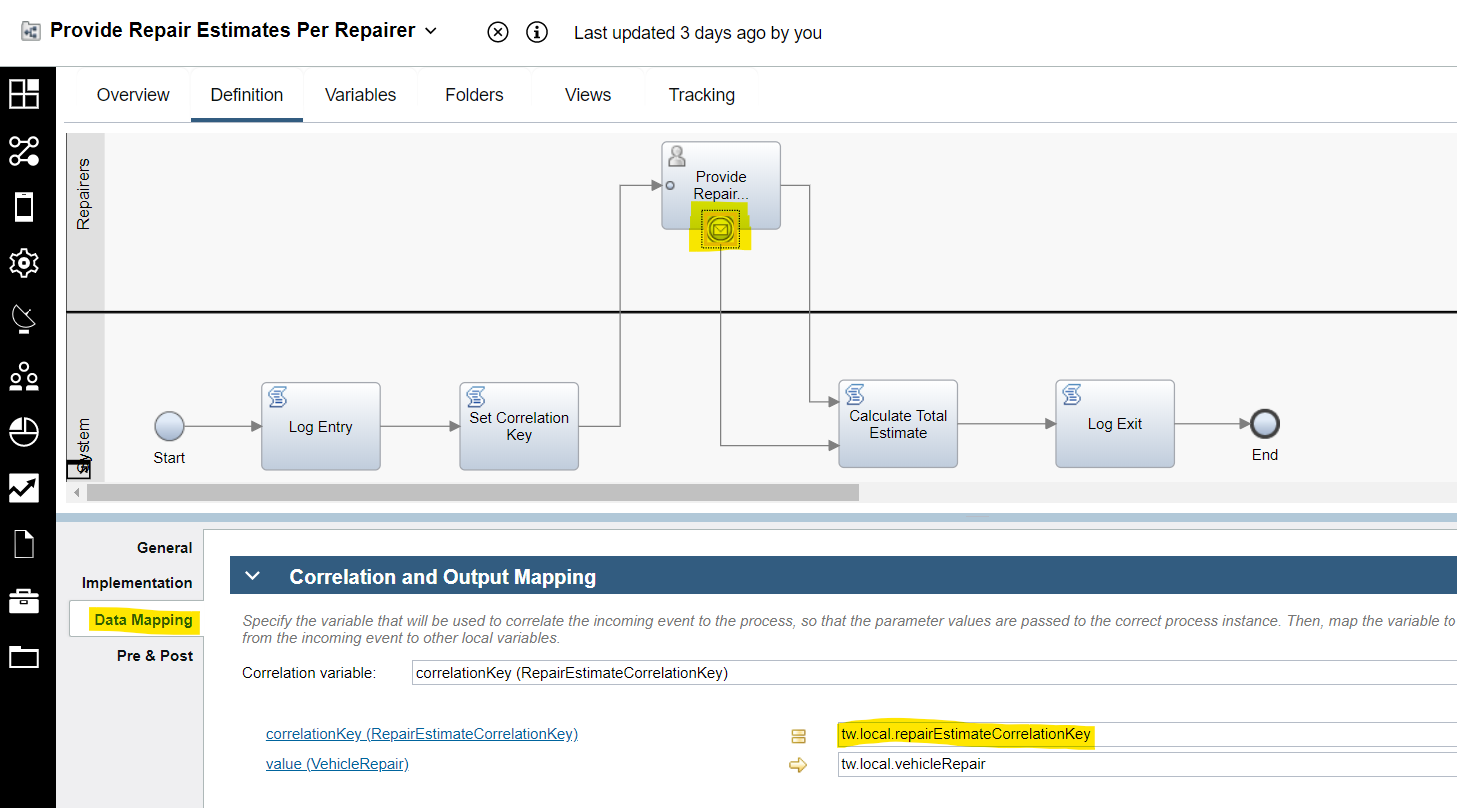
Process Repair Estimate invokes the linked process Handle Received Vehicle Repair Estimate in Denim Compute Auto Claims Toolkit to perform the main logic to fetch the uploaded document, provide it to BACA and parse the results and then create the event data for return to Process Repair Estimate.

The interaction with BACA is done via a mediation micro-service implemented in Node.js and deployed on Red Hat OpenShift Container Platform (OCP). The Service Flow invoked by Handle Received Vehicle Repair Estimate that handles the top level interaction with the microservice is Analyze and Parse Auto Repair Estimate shown below. The high level sequence of the logic is:
- Call the microservice to upload the PDF for analysis
- Wait before making a call to the microservice to check the status of the analysis and check that it has been parsed OK
- Retrieve the resulting Vehicle Repair Estimate from the microservice

The integration to the microservice (which in turn integrates to BACA) is self-contained in the Toolkit named Denim Compute Content Analysis Services. The REST integration to the microservice is via an External Service that exposes several operations (but not all as some cannot be processed in BAW as we shall see later).

The Service Flow named Request Auto Repair Estimate Analysis shown below needs to use a Script node to invoke one of the operations on the interface. This is because that operation (named requestAnalysis that allows for a file upload) uses a MIME type of multipart/form-data which BAW does not yet support.
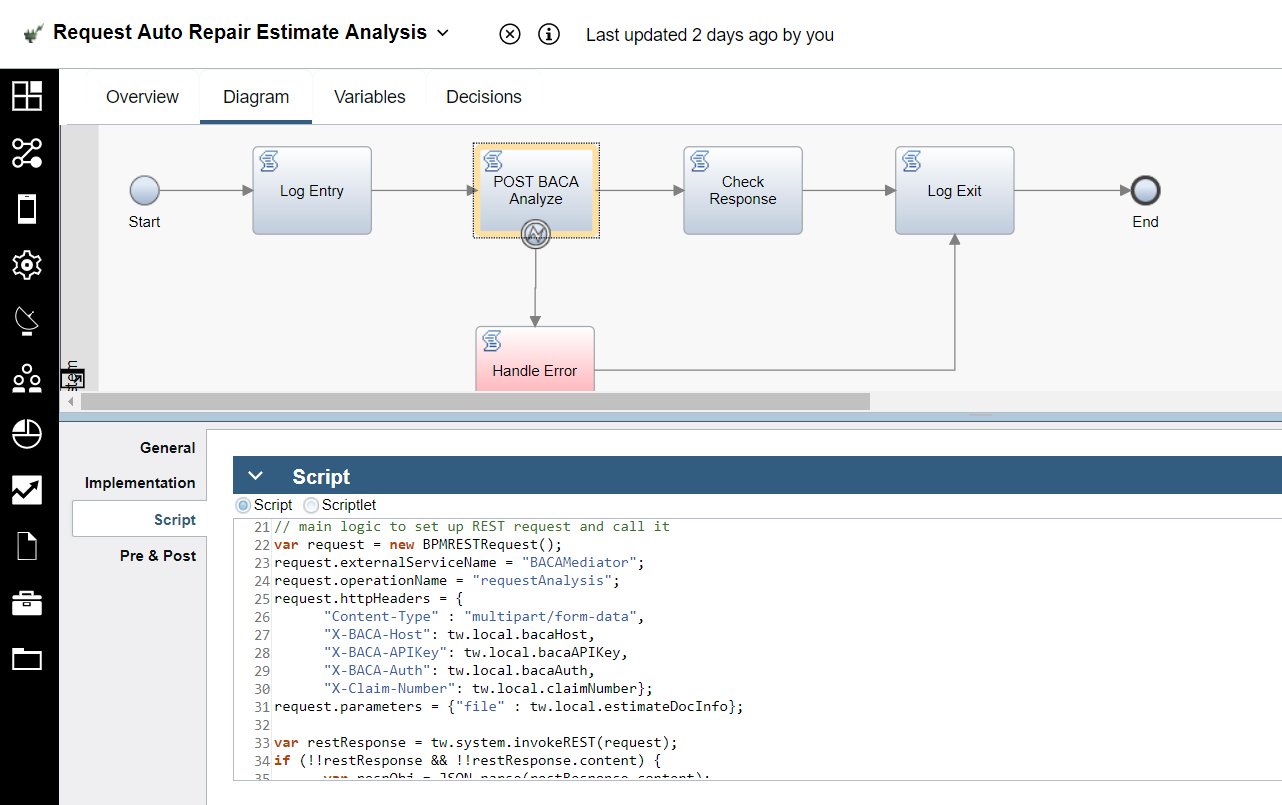
The Service Flow named Get BACA Analysis Status invokes the External Service operation named getStatusByAnalyzerId as shown below.

The Data Mapping section shows the various input data supplied to the operation. A number of these are REST Headers data and the other is the analyzerId which is returned as a response from the previous call to the requestAnalysis operation.
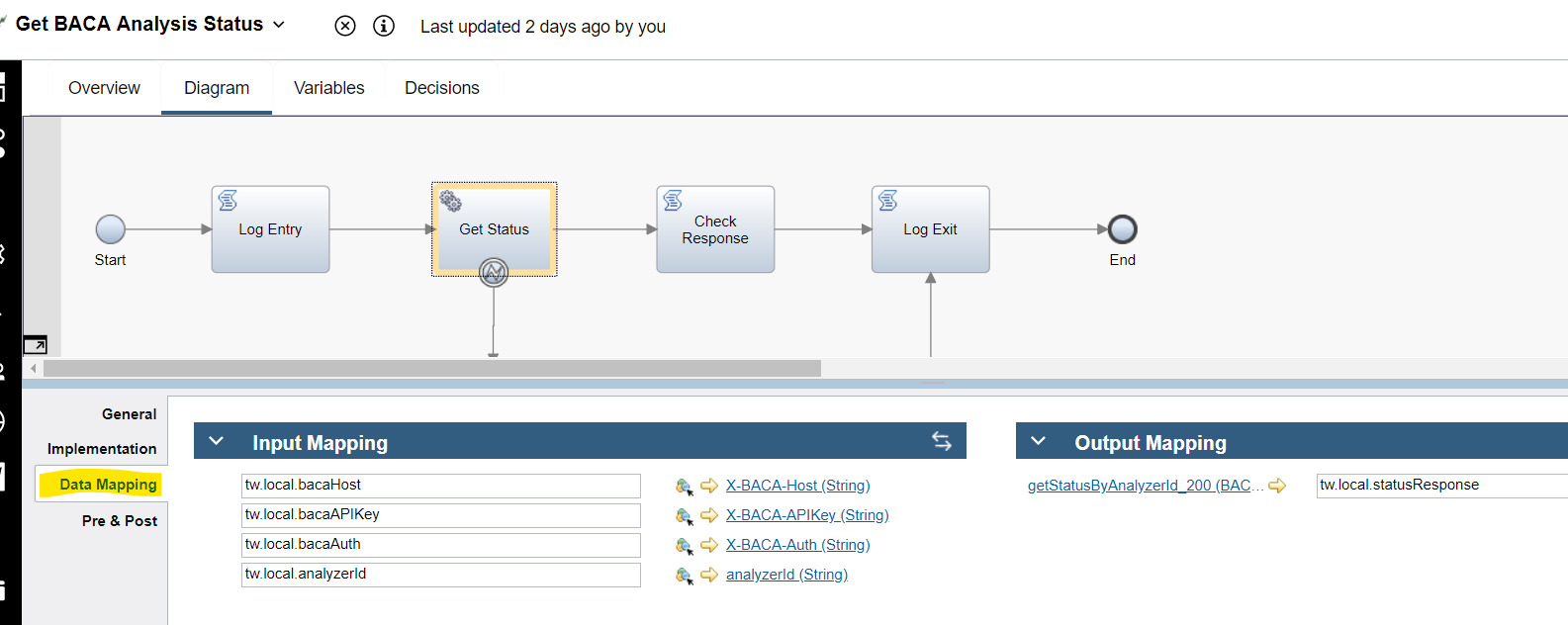
The Service Flow named Get BACA Analysis Results invokes the External Service operation named retrieveJSONByAnalyzerId in order to retrieve the resulting parsed estimate data from BACA.

Finally the flow also invokes the External Service operation named cleanupByAnalyzerId in order to delete the resources used by the request inside BACA.
